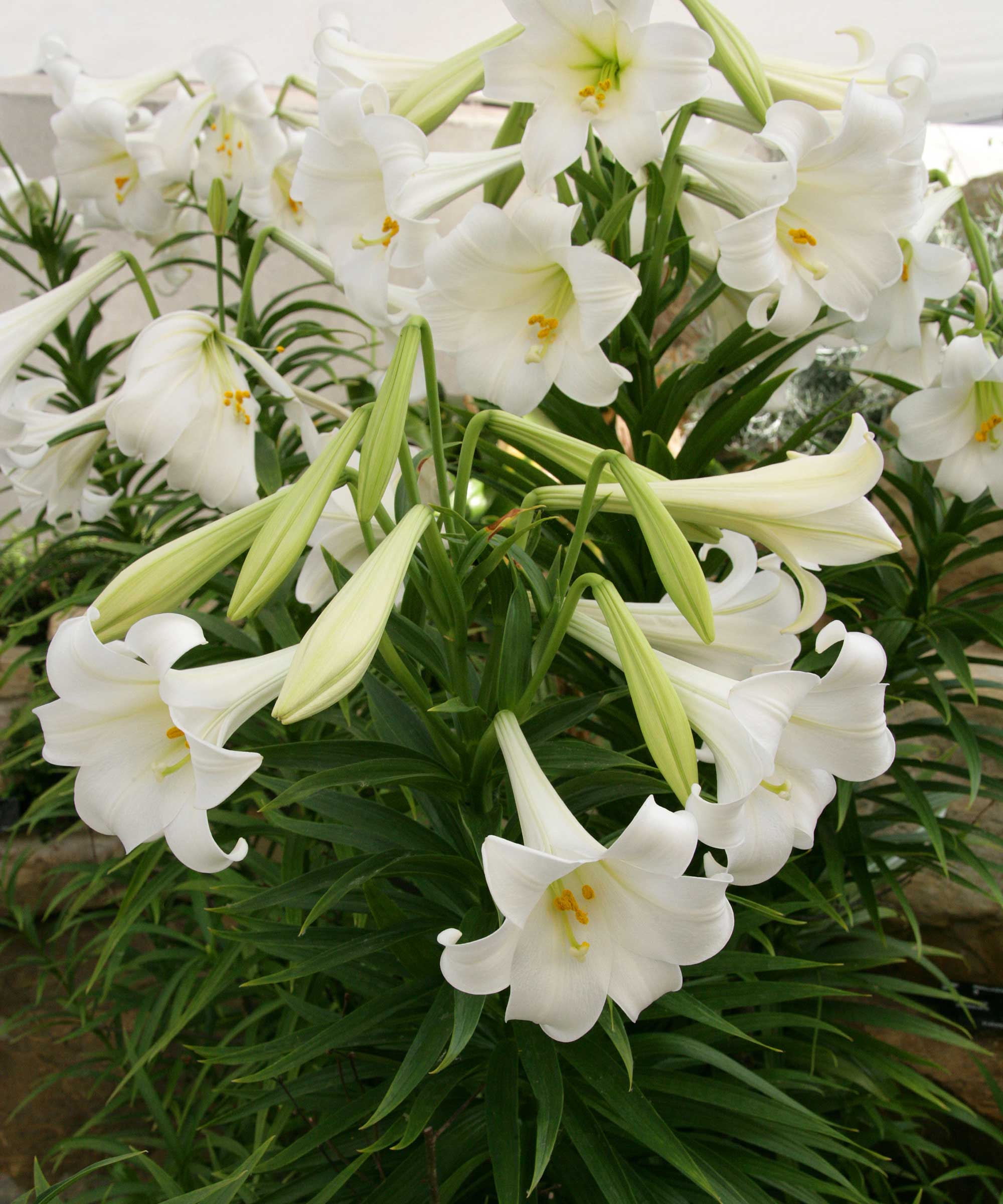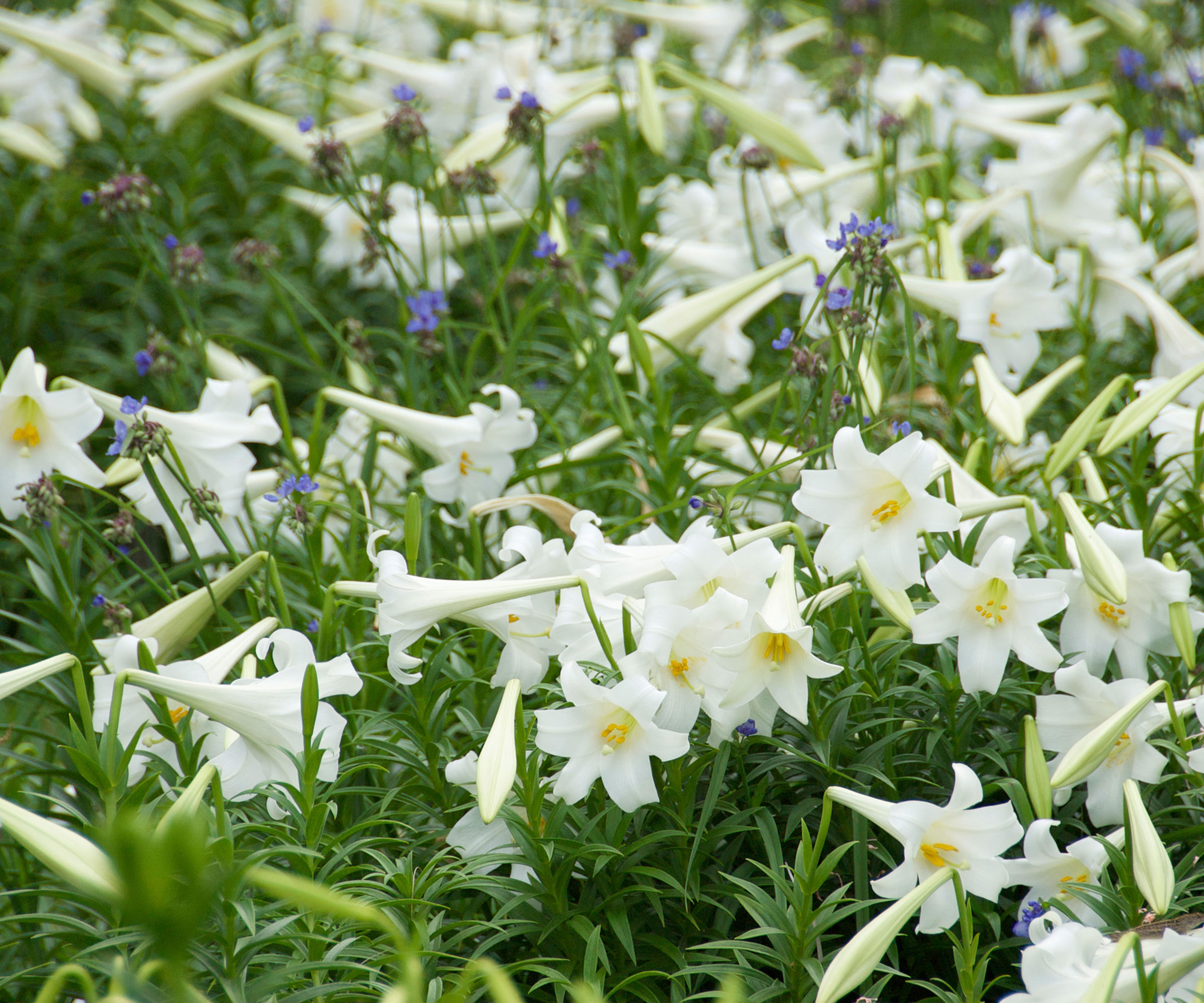Why is my Easter lily not blooming? 5 potential reasons and solutions
Get your Easter lily plants flowering again with these quick-fix tips from the experts


Whether your Easter lilies are potted up indoors or in the garden, you’ll want them to bloom in time for Easter. But if you're concerned as your plant isn’t flowering, the good news is this can be easily fixed.
The first thing to note is that Easter lilies need a cold winter followed by warm temperatures in spring, which act as a signal for them to grow and flower. So, if you live somewhere that doesn't get cold winters, try putting Easter lilies in a cool basement to trigger a similar response. Once that's sorted, in most cases all it takes is a few minor adjustments to your Easter lily care routine to get lots of beautiful flowers.
If you plan to pick up store-bought potted lilies, it's a good idea to choose plants with a few blooms already opened. It takes about 35 days from seeing a bud for an Easter lily to bloom, explains expert grower Dave Musselman of Musselman Greenhouses in Cashtown, Pennsylvania.

Sarah Wilson has been writing about gardens since 2015, covering everything from garden design to houseplant care. She has studied introductory garden and landscape design as well as floristry. She's a big fan of Easter lily plants.
5 reasons why your Easter lily may not be blooming
Most of the reasons why your Easter lily isn't producing flowers are pretty straightforward and easy to remedy, so you can get your plant back on track. Find out how to fix the most common problems then make stunning Easter lily flowers the centerpiece of all your spring garden ideas.

There are some common reasons for an Easter lily to stop blooming
1. Not enough light
For your Easter lily to flower, it will need at least six hours of sunlight a day. Any less than this might not be enough to encourage flowering. ‘Easter lilies need bright, indirect light to survive and produce blooms,’ says Aaditya Bhatta of Plantscraze.
The ideal spot for Easter lilies is one that’s in full sun to partial shade, with protection from strong sunlight that can scorch the foliage. If you're growing potted Easter lilies as indoor plants, positioning them near an eastern or southern window is also ideal.
2. Inadequate watering
If the soil around an Easter lily dries out, it can affect the flowering process as this plant prefers moist soil at all times. Push your finger into the soil to test how dry it is. If you meet resistance, then your plant definitely needs watering.
If your lily is part of your container garden, water thoroughly until you see the excess flow out of the drainage hole and don’t let your plant sit in pooled water once you’re done. ‘Easter lilies must be kept evenly moist, not waterlogged,’ says Richa Kedia of Simplify Plants. ‘If the soil is too dry, the plant will not bloom.’

Water your Easter lilies correctly to help them thrive
3. Over-watering your plant
It's always important to know how often to water houseplants and outdoor plants, and with Easter lilies, it's actually better to under-water than to over-water them. An under-watered plant will show signs of stress such as droopy leaves, but will recover quickly once it's watered properly. But if your Easter lily is over-watered, it’s much more detrimental.
‘When the soil is constantly wet, it can cause the roots to rot, which can harm the plant's ability to absorb water and nutrients,’ says plant expert Robert Silver of Progardeningblog.com. ‘Over-watering means a lack of flowers and can also create a breeding ground for fungi and pests, which can further harm the plant.’
4. Growing at the incorrect temperature
Easter lilies grow and flower best in mild temperatures, ideally with night-time temperatures dipping no lower than 55-60°F. Easter lily plants don't tend to grow or flower well in hot and humid climates.
'Easter lilies need cold day-time temperatures of 60–65°F and slightly chilly evening temperatures,’ says Aaditya Bhatta of Plantscraze. ‘Excessively high or low temperatures will impact the plant's capacity to produce blooms.’

Easter lilies in bloom
5. Not enough fertilizer
'Easter lilies require routine fertilization to bloom,' says Richa Media of Simplify Plants. 'If the plant is not receiving enough nutrients, it may not produce flowers.'
But over-fertilization can be an issue too. 'If you fertilize excessively, your Easter lily may concentrate more on developing leaves than flowers,' says Aaditya Bhatta of Plantscraze. Ensure you use a balanced fertilizer, like this Miracle-Gro one from Amazon, following the directions on the label.
It's also essential for growth and new blooms that Easter lilies are not competing for nutrients. Consider dividing the plants into separate pots if your indoor Easter lily becomes too crowded.
Sign up to the Homes & Gardens newsletter
Design expertise in your inbox – from inspiring decorating ideas and beautiful celebrity homes to practical gardening advice and shopping round-ups.
Lifestyle journalist Sarah Wilson writes about flowers, plants, garden design and gardening trends for Homes & Gardens. She has studied introductory garden and landscape design and floristry, and also has an RHS Level 2 qualification in the Principles of Plant Growth and Development. She is a regular contributor to Homes & Gardens and Livingetc. She has also written for Real Homes, Modern Gardens and Country Homes & Interiors magazines.
-
 Lenny Kravitz says design is 'just like music' – and the stunning materials of this bedroom embody this laidback luxe approach
Lenny Kravitz says design is 'just like music' – and the stunning materials of this bedroom embody this laidback luxe approachRich textures and opulent finishes come together in a Los Angeles bedroom designed by the musician – it's ultra-chic, but relaxed
By Sophie Edwards
-
 Courtney Love's historic loft combines rock star luxury with raw New York bones – it's on the market for almost $9.5 million
Courtney Love's historic loft combines rock star luxury with raw New York bones – it's on the market for almost $9.5 millionThe singer's former SoHo home features exposed brick walls, original wooden columns, a gas fireplace, and high ceilings – take the tour
By Hannah Ziegler